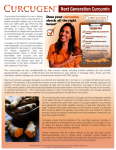Researchers engineer probiotic yeast to deliver nutrients ‘on-site’

The research, published in the journal ACS Synthetic Biology, detailed how the research team was able to produce beta-carotene in the guts of laboratory mice.
"You're not just delivering drugs or nutrients; you are effectively manufacturing the drugs or nutrients on-site,” said Nathan Crook, corresponding author of the study and an assistant professor of chemical and biomolecular engineering at North Carolina State University. “There are clear advantages to being able to engineer probiotics so that they produce the desired molecules right where they are needed.”
A number of animal studies suggest that S. boulardii can be used as a biotherapeutic in humans and some clinical trials have indicated that it can alleviate symptoms in GI infections, although further trials are needed to understand the full therapeutic potential of S. boulardii.
Probiotic function using engineered yeast is an exciting new area, although genome modification tools for use in S. boulardii have been limited until recently. This new study demonstrates how advancements in genetic engineering tools can be used to modify the yeast.
S. boulardii is a probiotic that can survive and thrive in the gut, whereas most other yeast species either can't tolerate the heat or are broken down by stomach acid. S. boulardii exhibits rapid growth at 37°C/98°F, is easy to transform, and can produce therapeutic proteins in the gut.
S. boulardii and S. cerevisiae
S. boulardii genetically resembles Saccharomyces cerevisiae, with S. boulardii being better suited for the gut microenvironment due to its greater acid and heat tolerance.
With many well-established tools for genetically engineering S. cerevisiae, the researchers wanted to get a better understanding of which genetic engineering tools would work best in the case of S. boulardii.
Tools
The researchers looked at two tools that are widely used for gene editing with the CRISPR system and dozens of tools that were developed specifically for modifying S. cerevisiae.
"We were a little surprised to learn that most of the S. cerevisiae tools worked really well in S. boulardii," Crook said. "Honestly, we were relieved because, while they are genetically similar, the differences between the two species are what make S. boulardii so interesting, from a therapeutic perspective."
Once the team established the viability of the toolkit, researchers decided to demonstrate its functionality modifying S. boulardii to produce beta-carotene.
“To establish its ability to produce small molecules encoded by multigene pathways, we measured the amount and variance in protein expression enabled by promoters, terminators, selective markers, and copy number control elements. We next demonstrated efficient (>95%) CRISPR-mediated genome editing in this strain, allowing us to probe engineered gene expression across different genomic sites. We leveraged these strategies to assemble pathways enabling a wide range of vitamin precursor (β-carotene) and drug (violacein) titers,” the report explained.
Orange ambition
"On the one hand, beta-carotene is orange—so we could tell how well we were doing just by looking at the colonies of yeast on a petri dish: they literally changed color," Crook explained. "On a more ambitious level, we knew that beta-carotene is a major provitamin A carotenoid, which means that it can be converted into vitamin A by the body—and we knew that vitamin A deficiency is a major public health problem in many parts of the world. So why not try to develop something that has the potential to be useful?"
Findings
The research team tested the modified S. boulardii in a mouse model and found that the yeast cells successfully created beta-carotene in the guts of mice.
“We found that S. boulardii colonizes germ-free mice stably for over 30 days and competes for niche space with commensal microbes, exhibiting short (1–2 day) gut residence times in conventional and antibiotic-treated mice," the report read. "Using these tools, we enabled β-carotene synthesis (194 μg total) in the germ-free mouse gut over 14 days, estimating that the total mass of additional β-carotene recovered in feces was 56-fold higher than the β-carotene present in the initial probiotic dose. This work quantifies heterologous small molecule production titers by S. boulardii living in the mammalian gut and provides a set of tools for modulating these titers.”
This proof of concept leaves Crook with many questions still remaining: "How much of this beta-carotene is getting absorbed by the mice? Are these biologically relevant amounts of beta-carotene? Would it work in humans?”
Crook said these are all questions they’ll have to address in future work.
Source: ACS Synthetic Biology
April 12, 2021 doi.org/10.1021/acssynbio.0c00562
“In Situ Biomanufacturing of Small Molecules in the Mammalian Gut by Probiotic Saccharomyces boulardii”
Authors: D. Durmusoglu
















